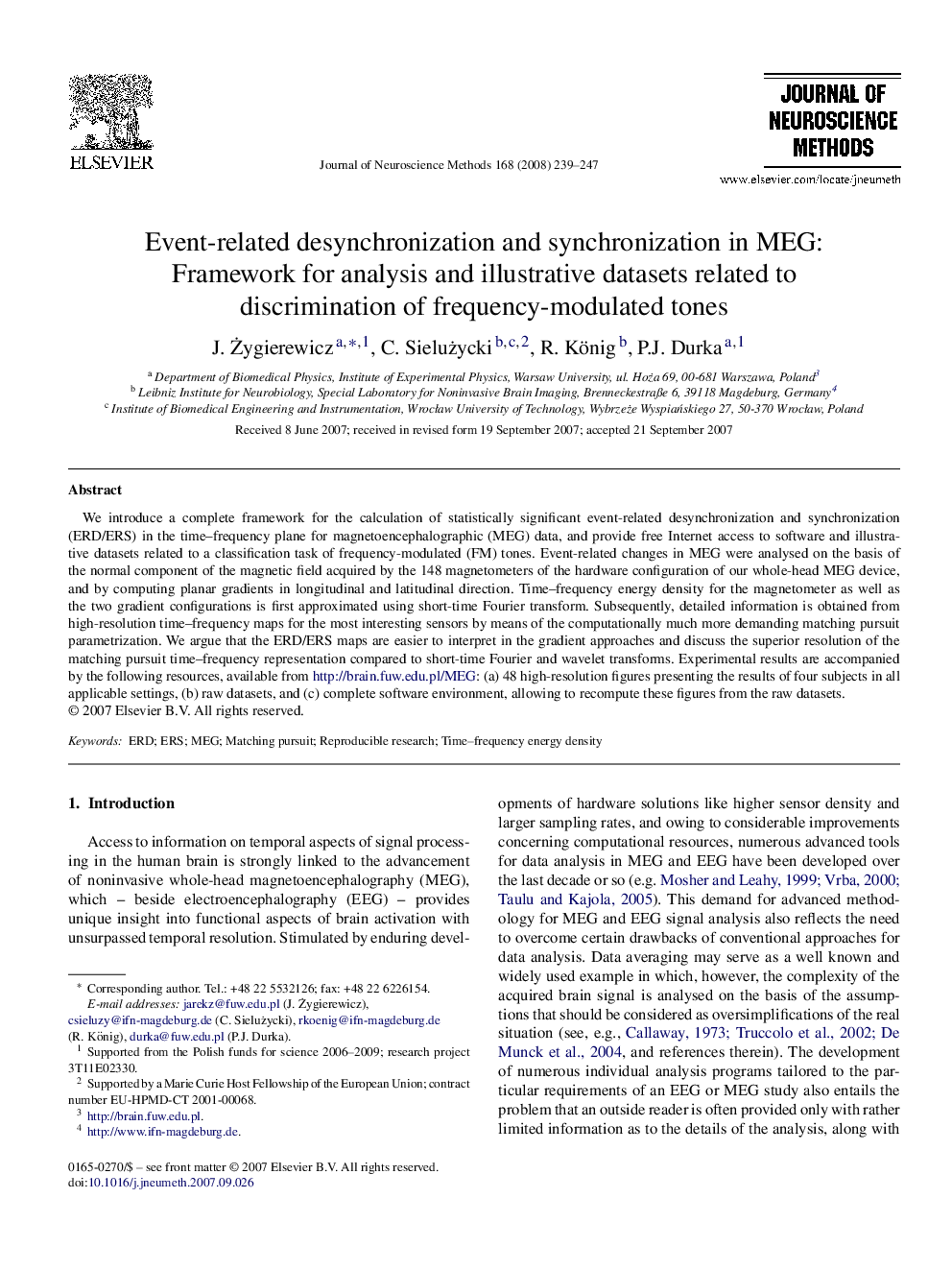| Article ID | Journal | Published Year | Pages | File Type |
|---|---|---|---|---|
| 4336636 | Journal of Neuroscience Methods | 2008 | 9 Pages |
We introduce a complete framework for the calculation of statistically significant event-related desynchronization and synchronization (ERD/ERS) in the time–frequency plane for magnetoencephalographic (MEG) data, and provide free Internet access to software and illustrative datasets related to a classification task of frequency-modulated (FM) tones. Event-related changes in MEG were analysed on the basis of the normal component of the magnetic field acquired by the 148 magnetometers of the hardware configuration of our whole-head MEG device, and by computing planar gradients in longitudinal and latitudinal direction. Time–frequency energy density for the magnetometer as well as the two gradient configurations is first approximated using short-time Fourier transform. Subsequently, detailed information is obtained from high-resolution time–frequency maps for the most interesting sensors by means of the computationally much more demanding matching pursuit parametrization. We argue that the ERD/ERS maps are easier to interpret in the gradient approaches and discuss the superior resolution of the matching pursuit time–frequency representation compared to short-time Fourier and wavelet transforms. Experimental results are accompanied by the following resources, available from http://brain.fuw.edu.pl/MEG: (a) 48 high-resolution figures presenting the results of four subjects in all applicable settings, (b) raw datasets, and (c) complete software environment, allowing to recompute these figures from the raw datasets.
